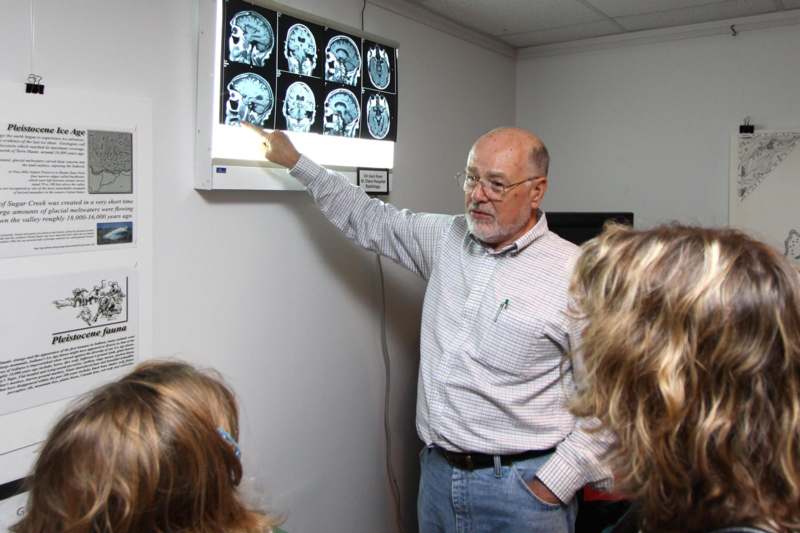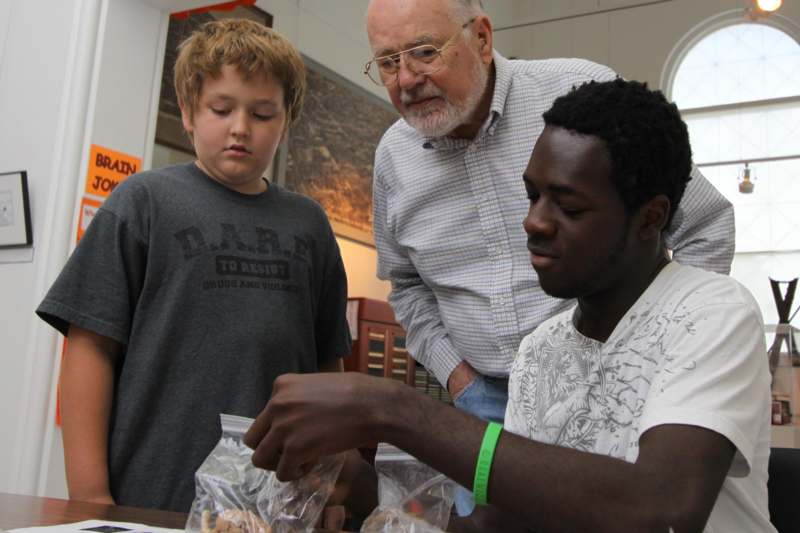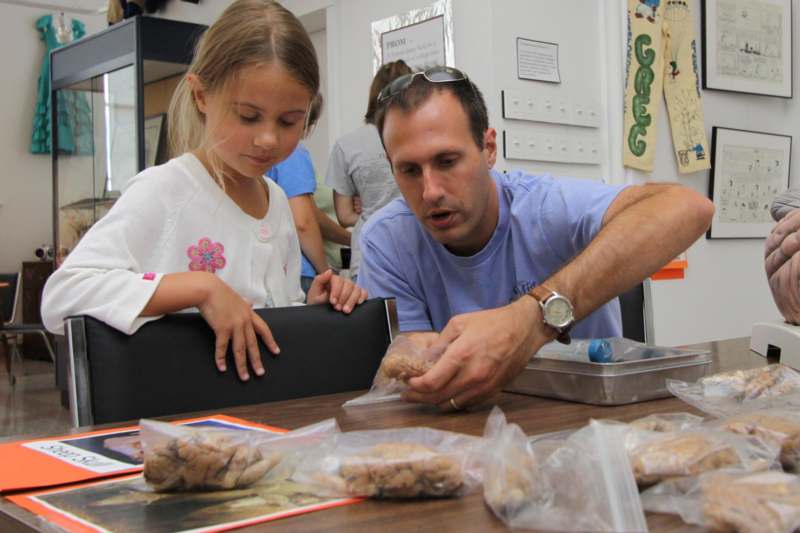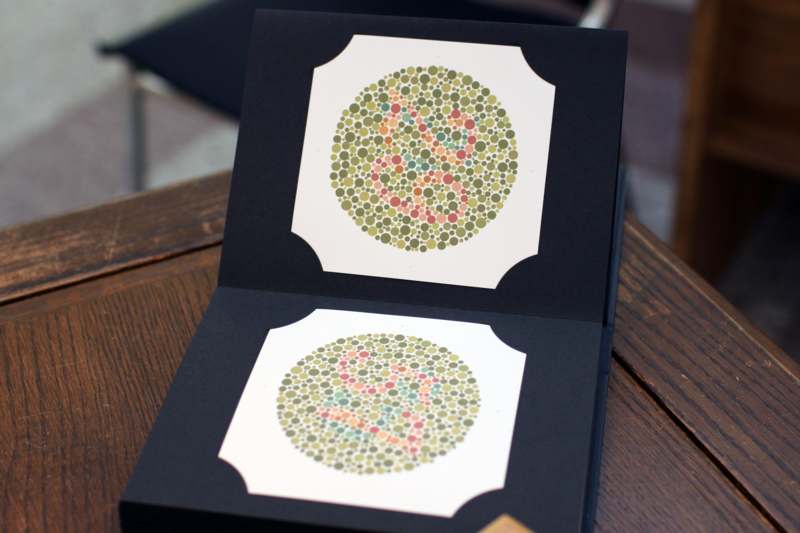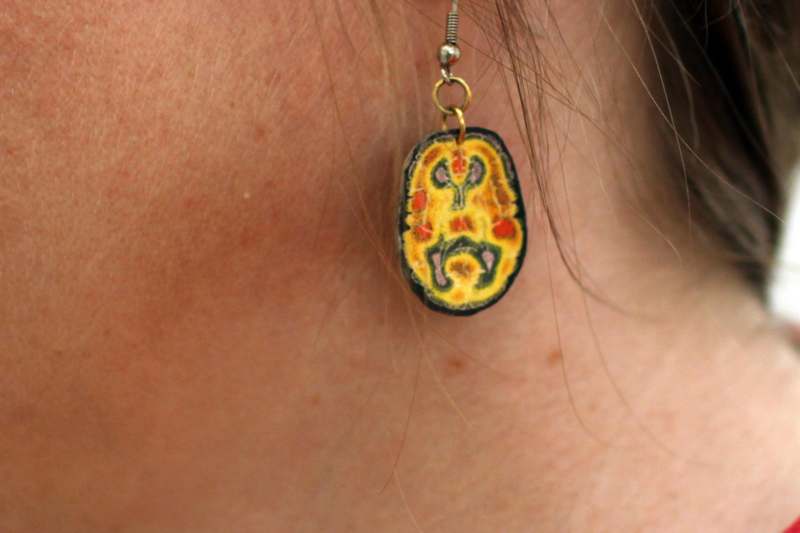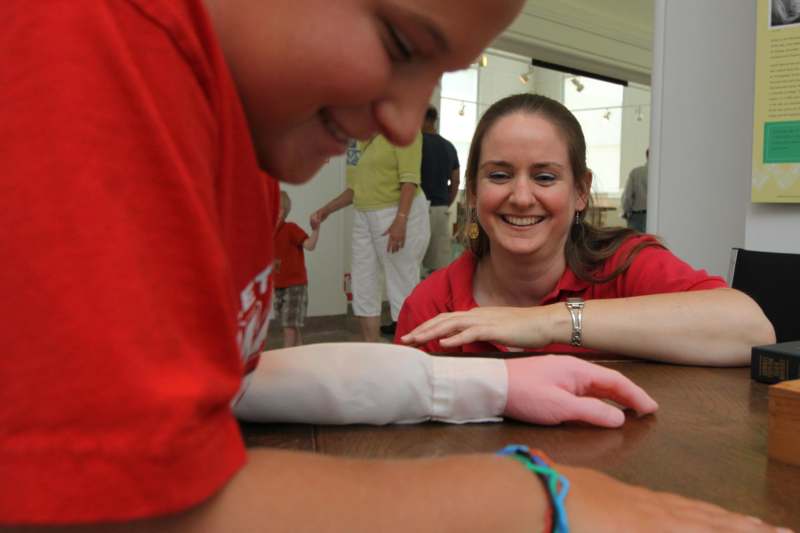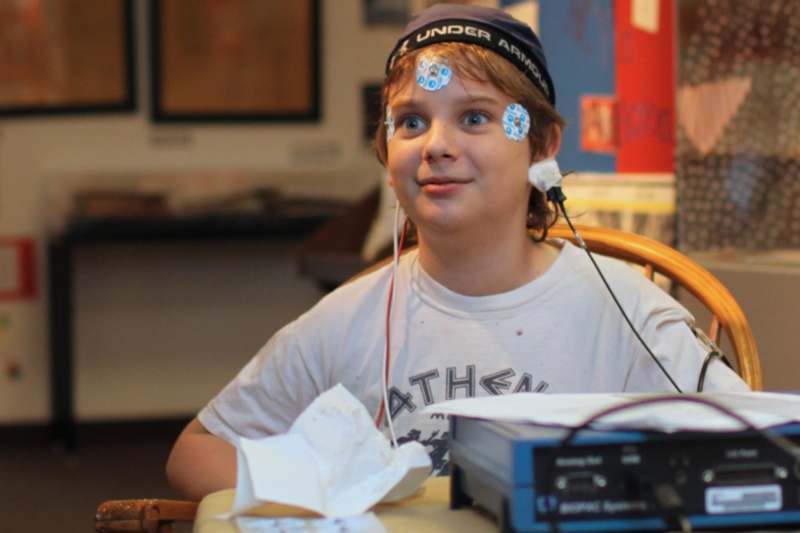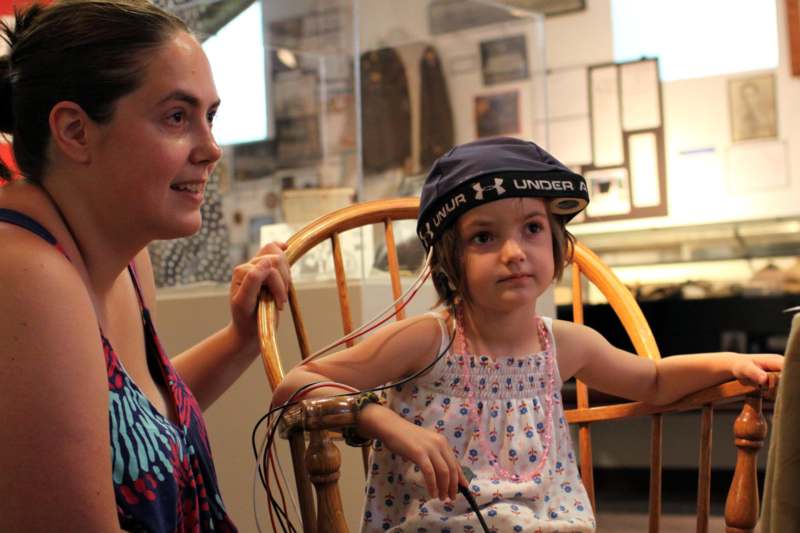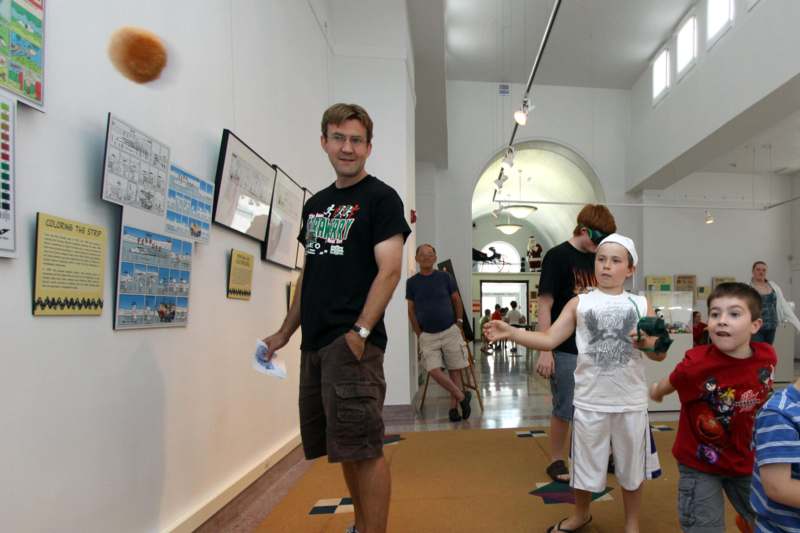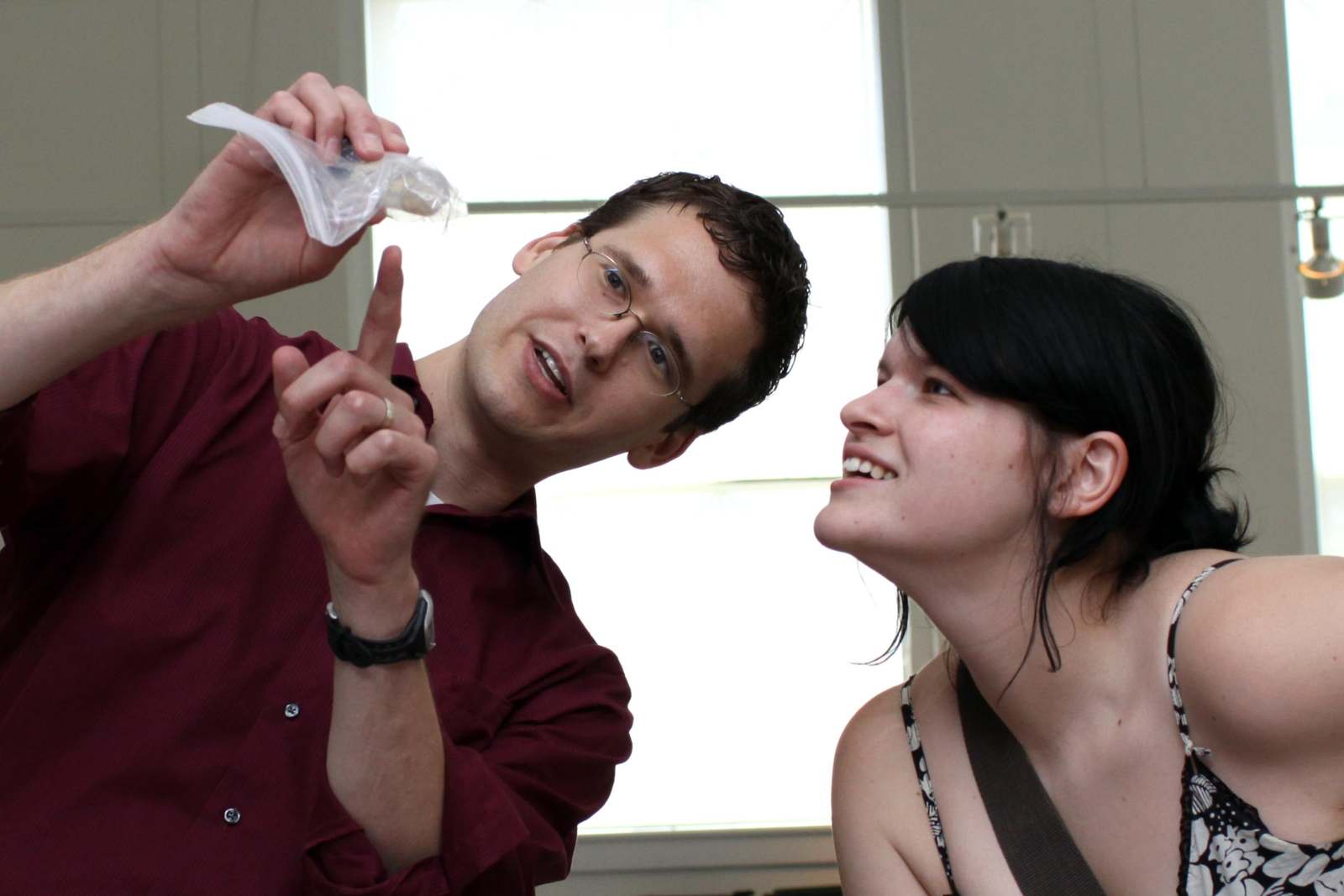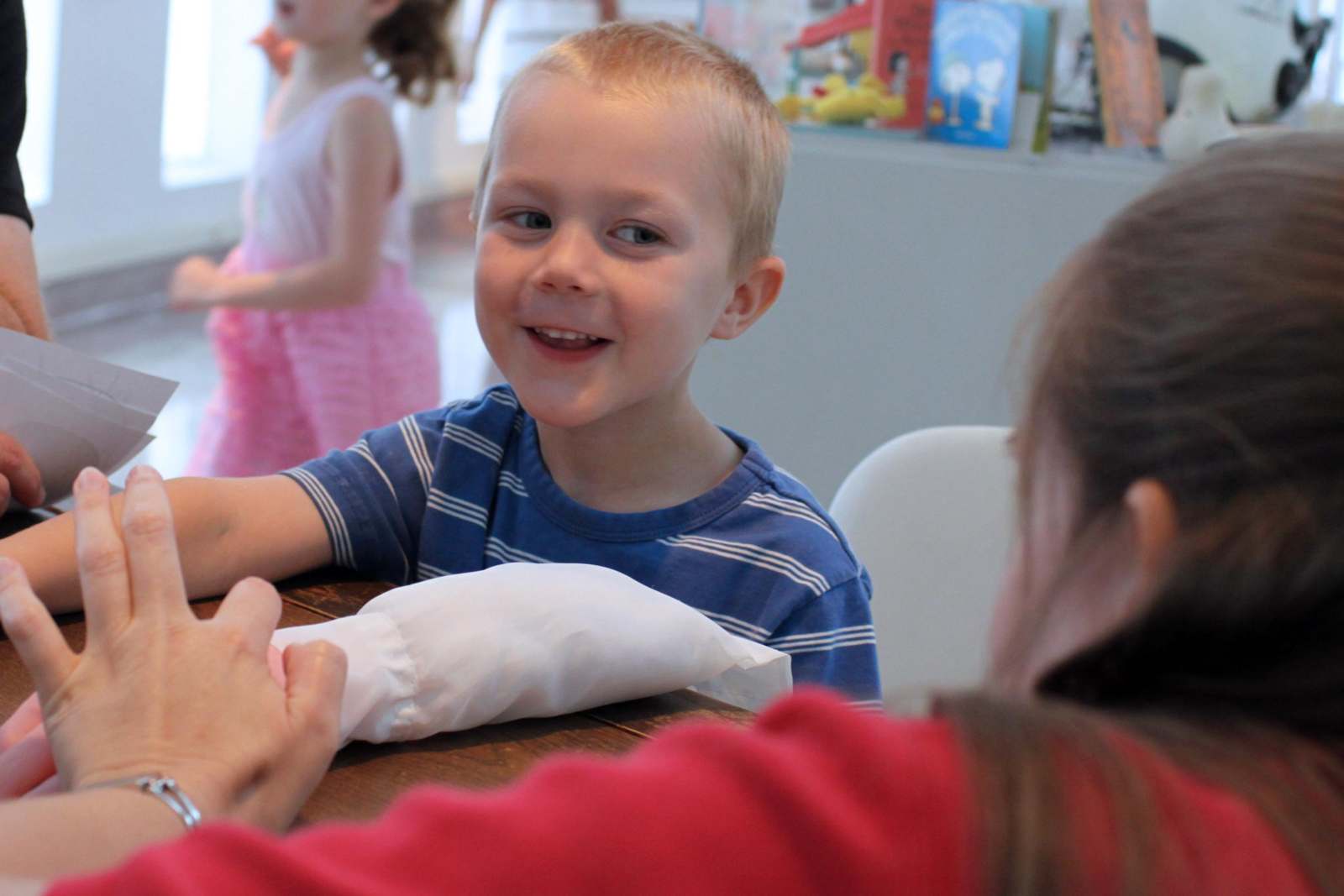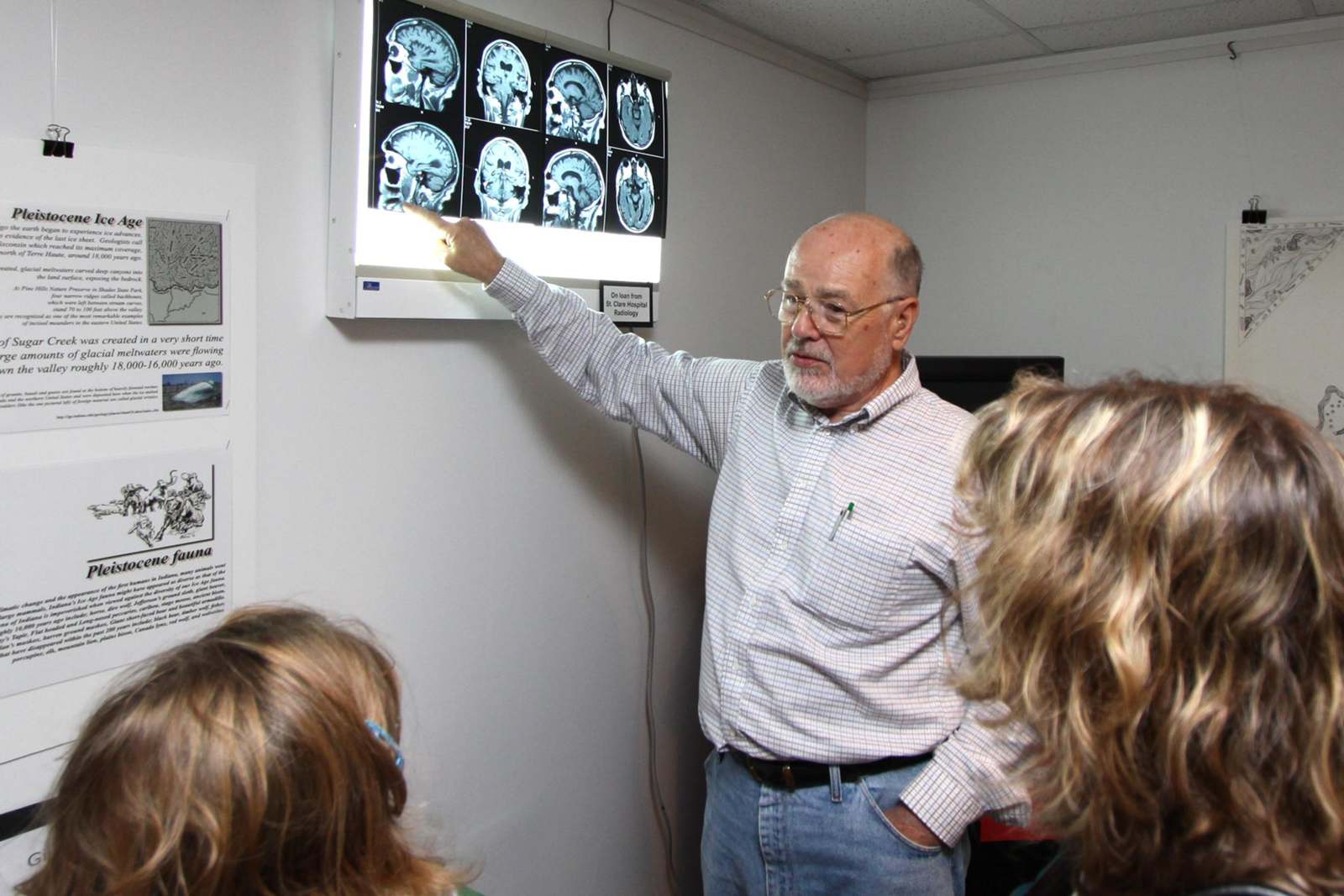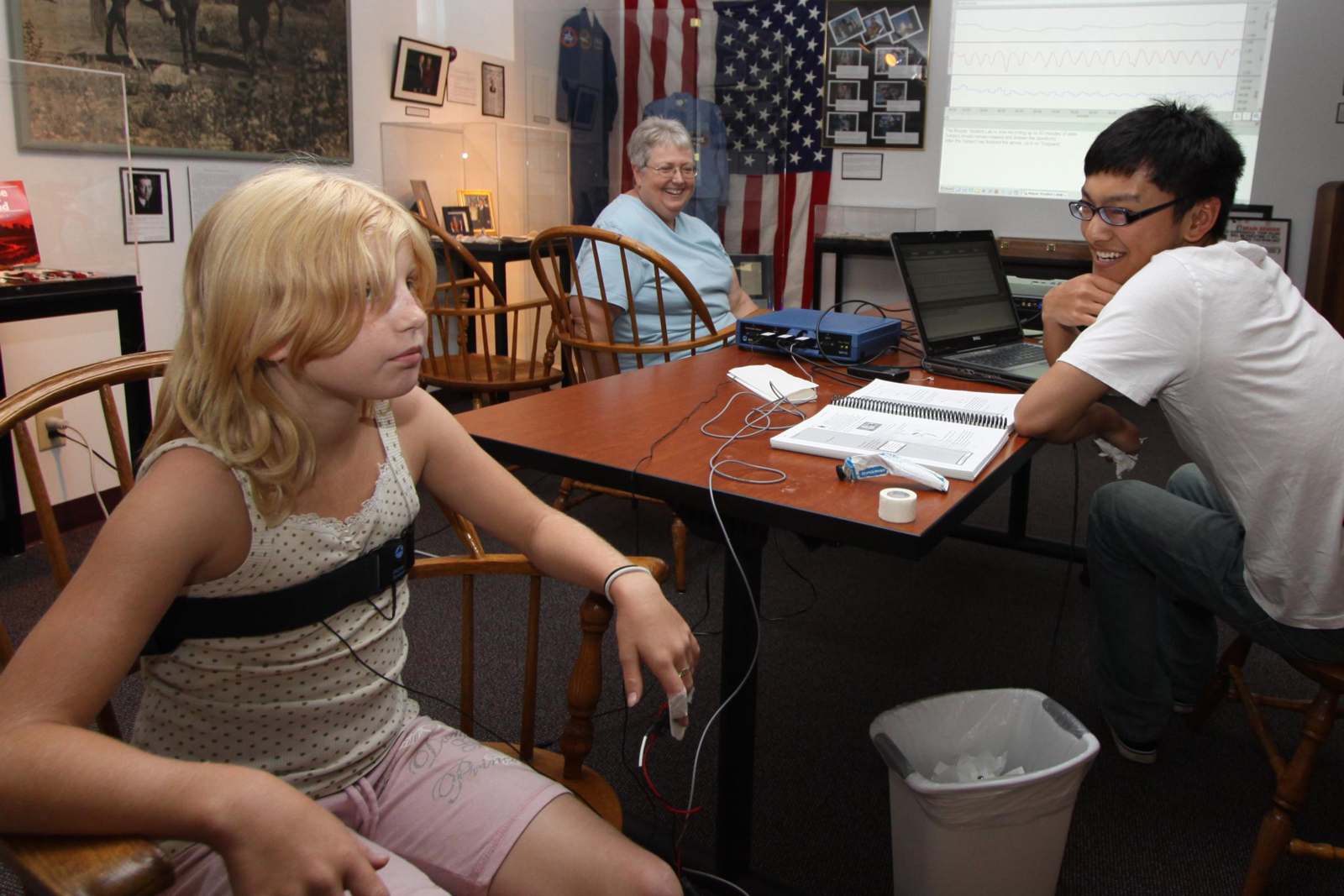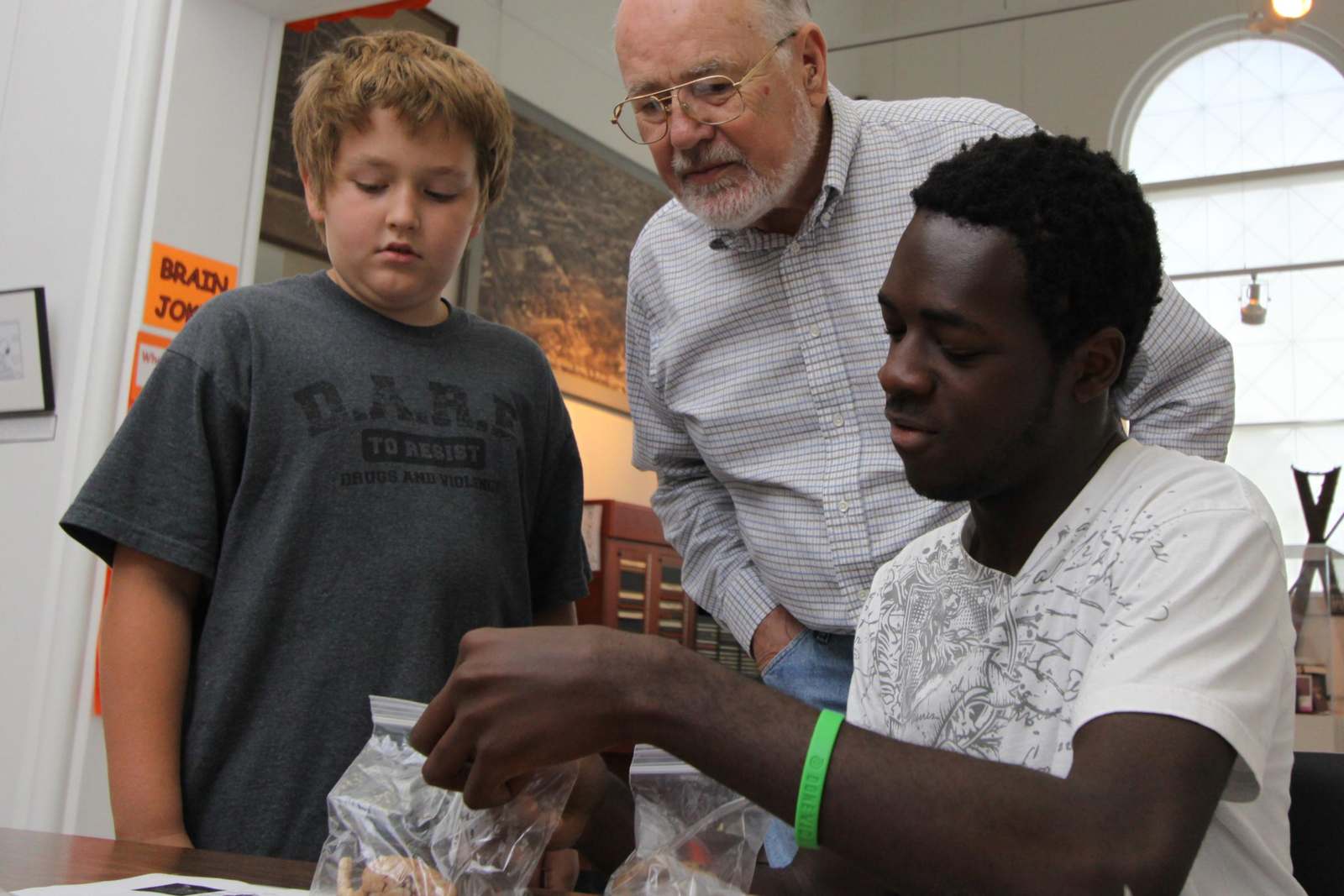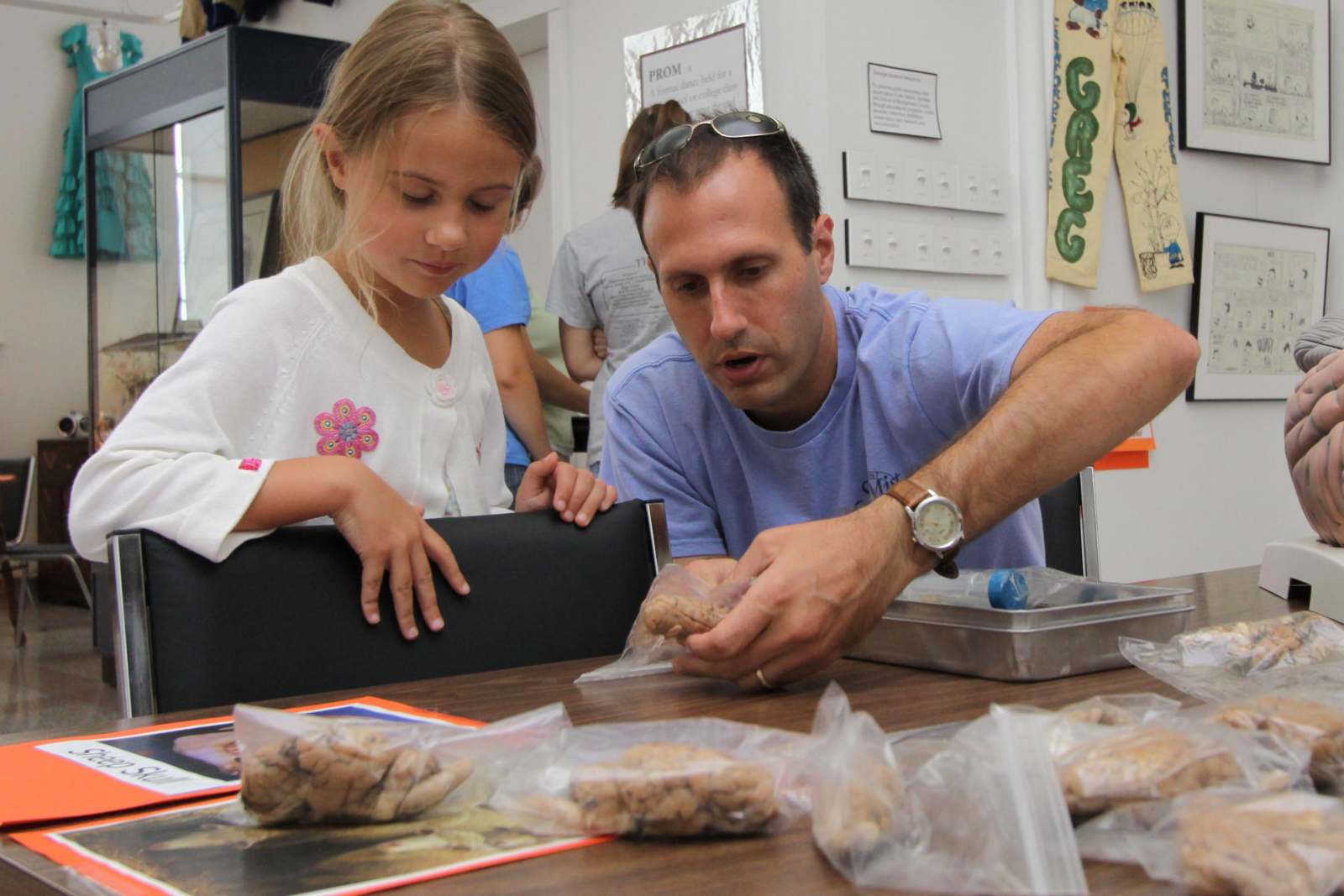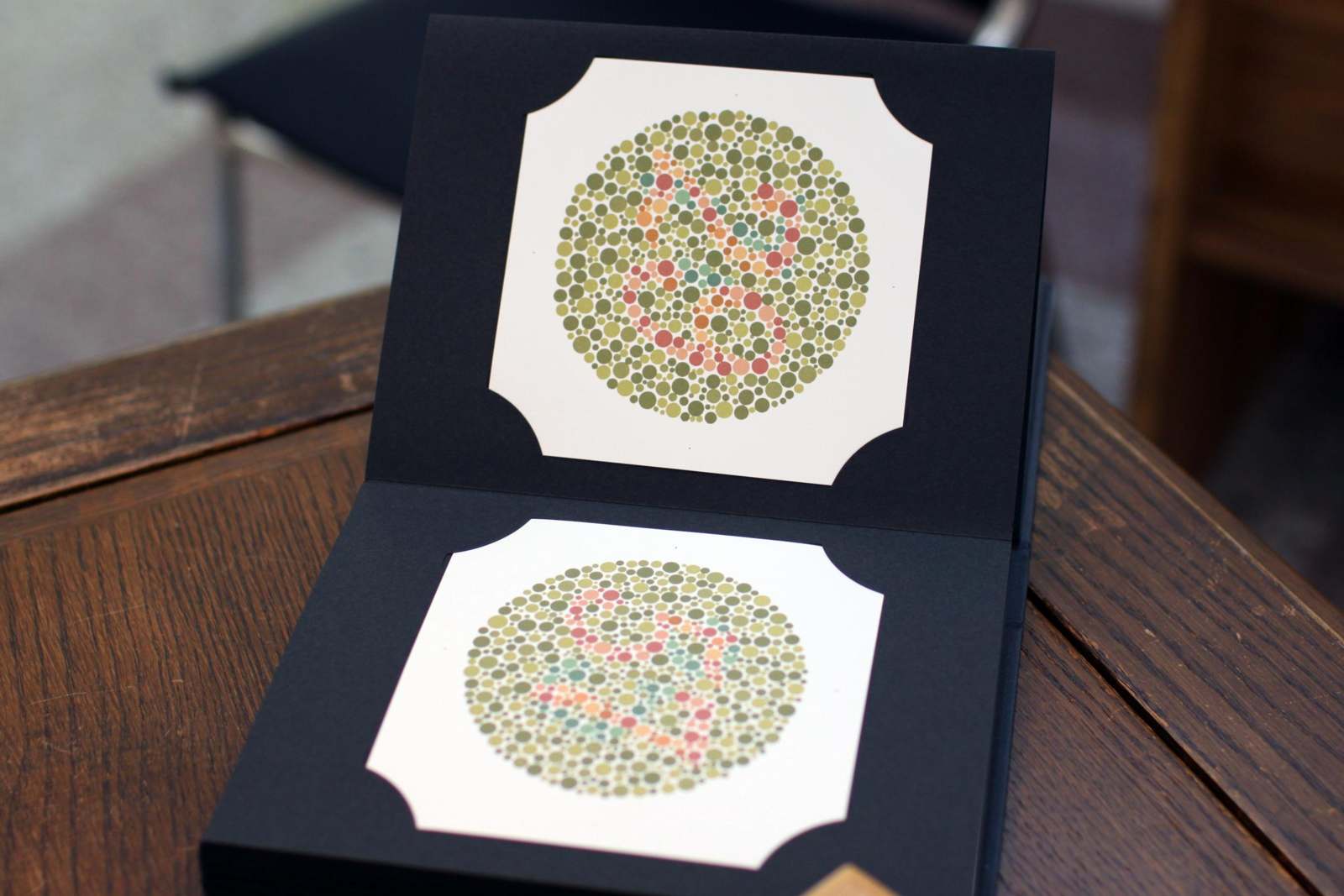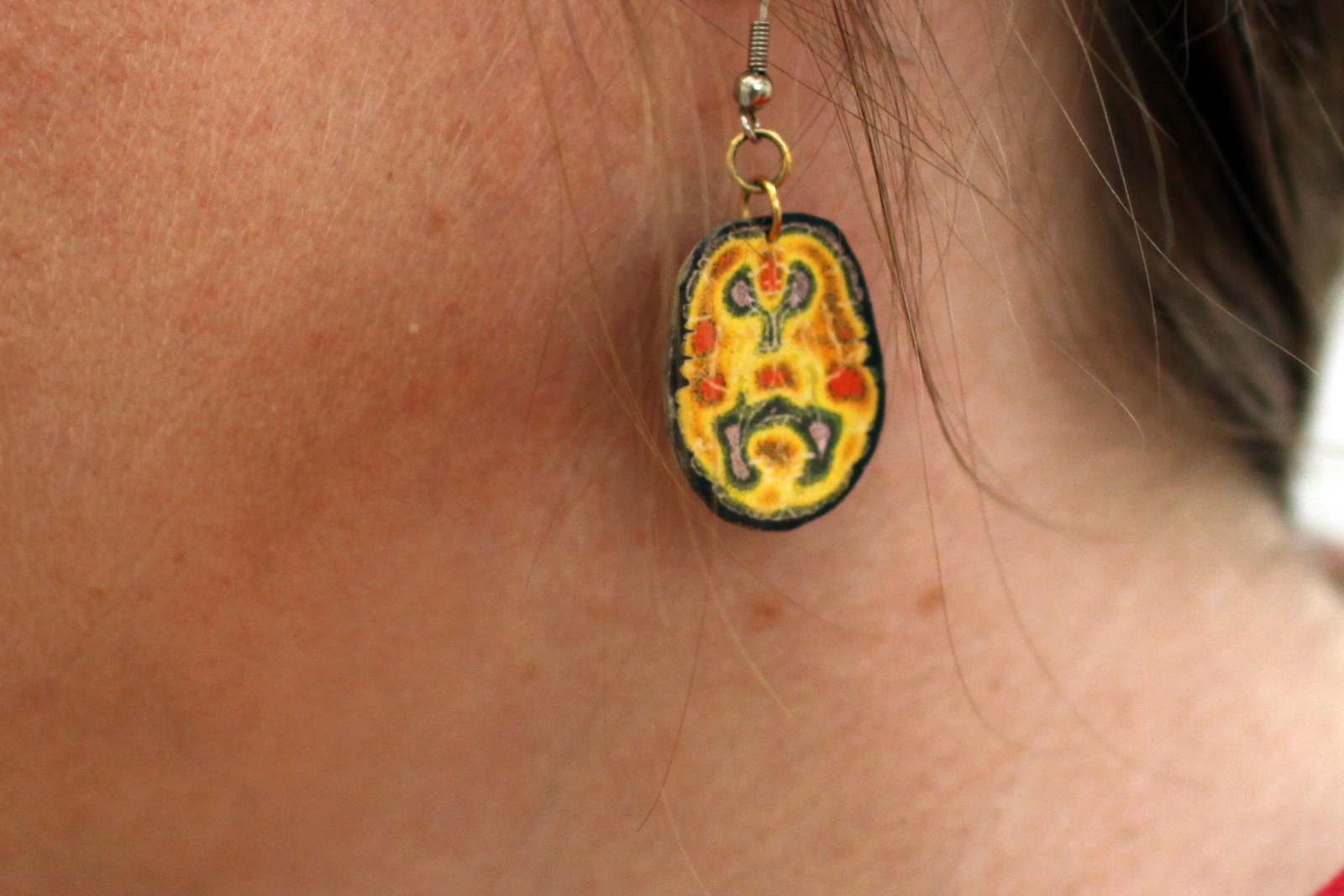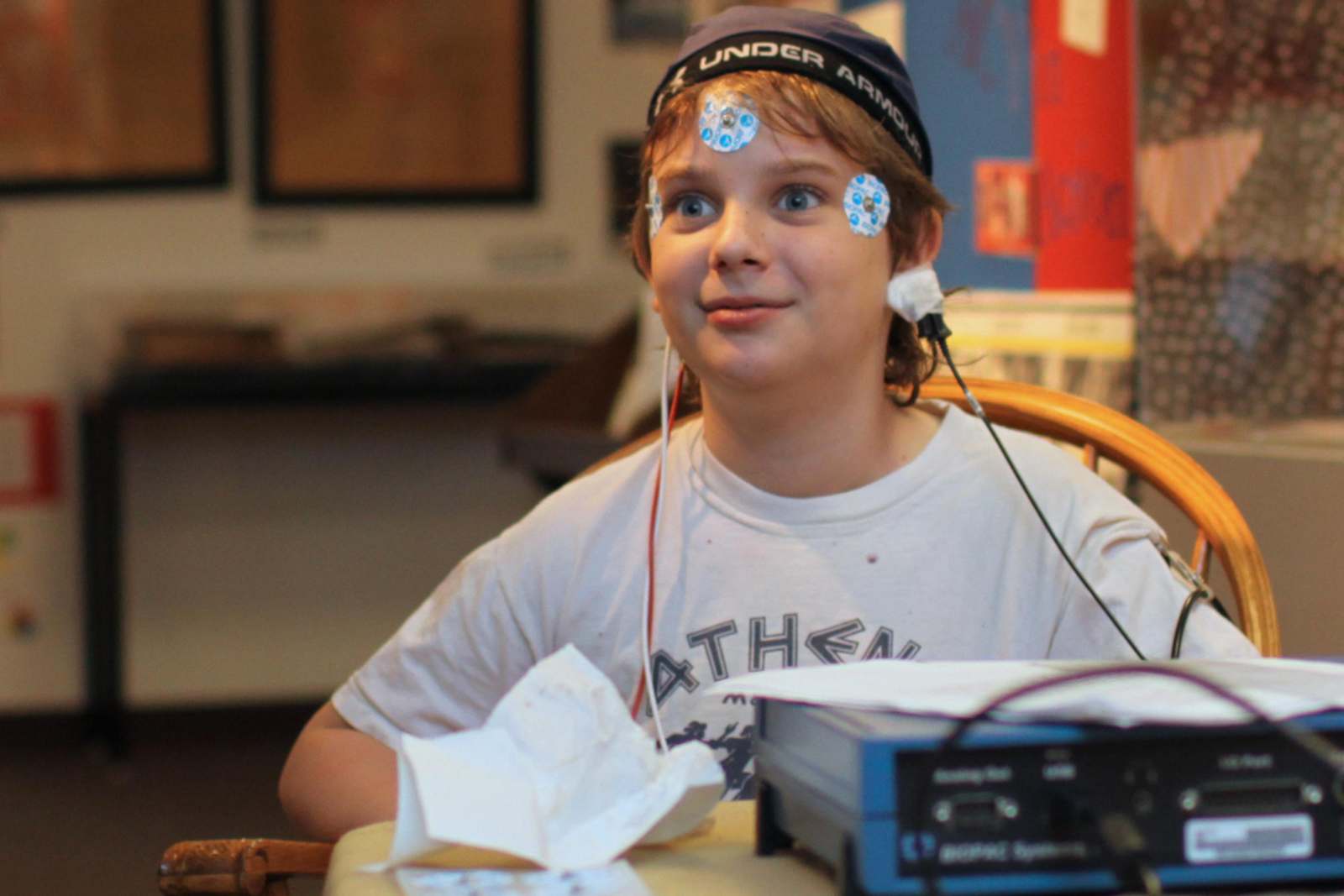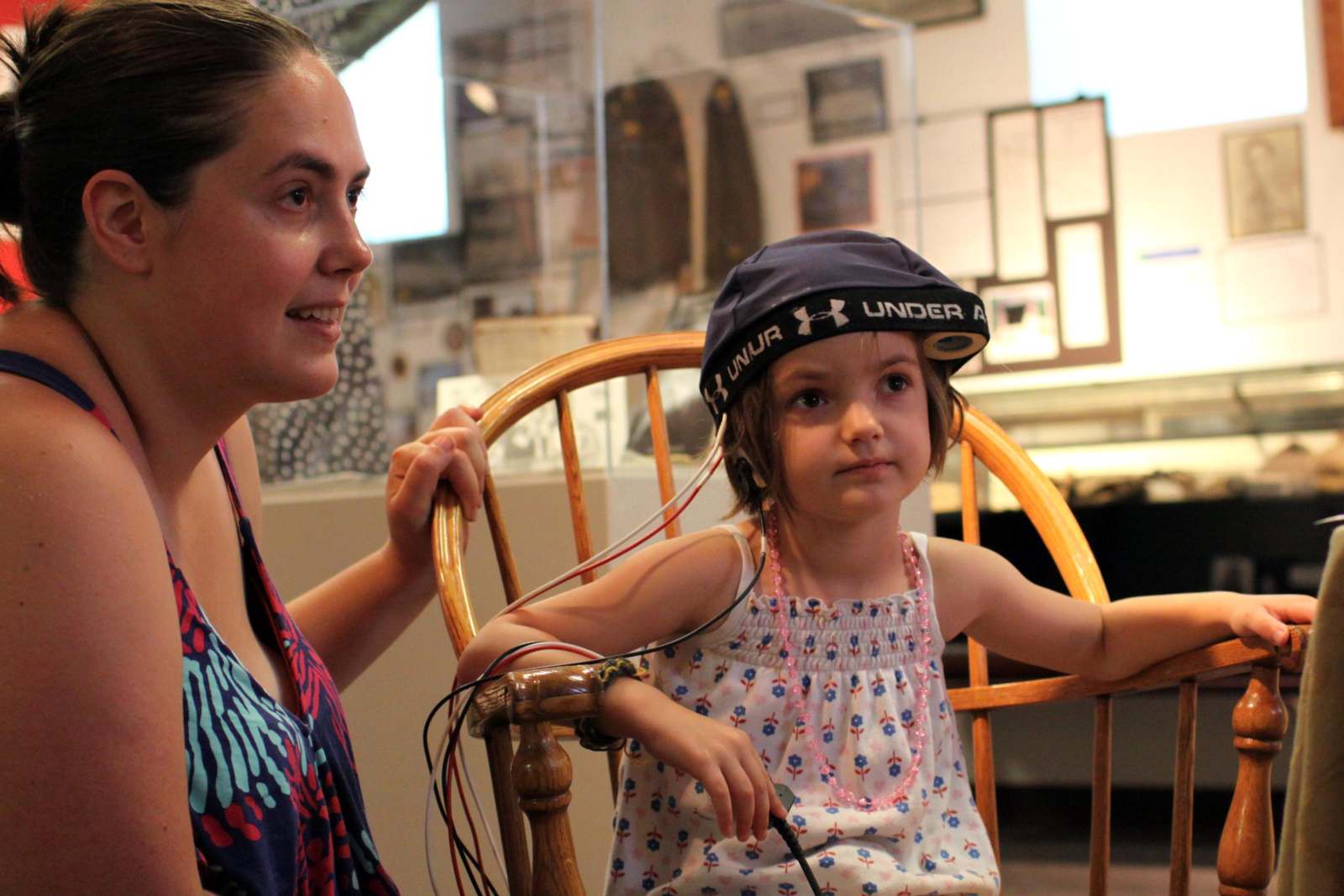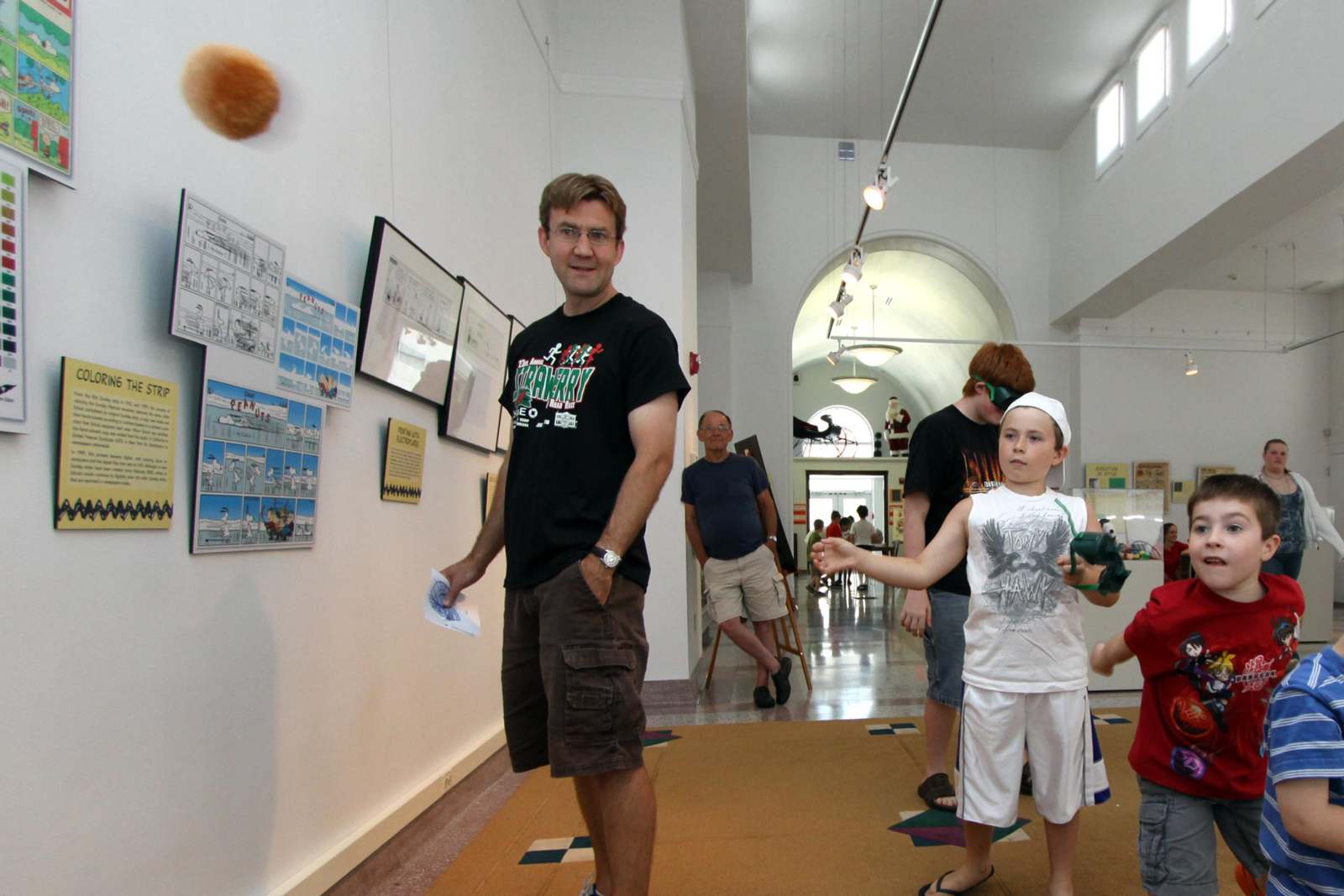Brain Day at the Carnegie Museum 2010
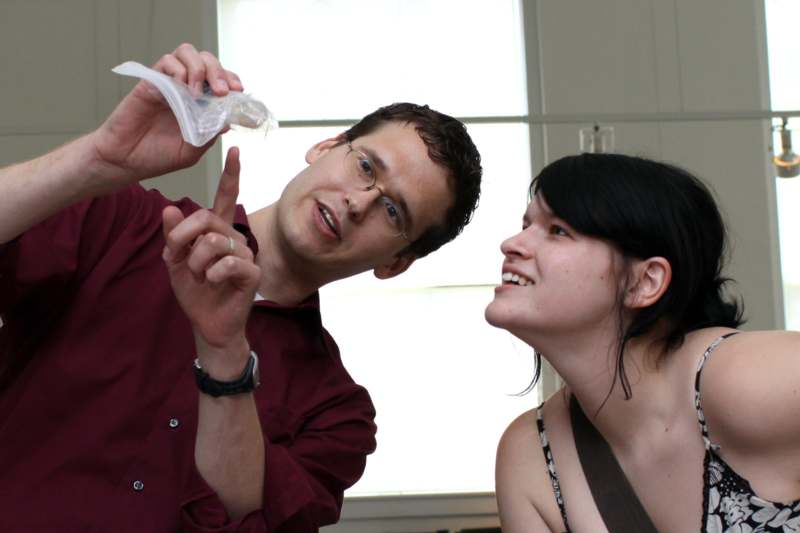
The Second Annual Brain Day at the Carnegie Museum of Montgomery County, a partnership between the museum and the Wabash College Psychology Department, proved another great success last Saturday, drawing 120 students and adults from the Crawfordsville and Wabash communities for an afternoon of learning activities.
This year's participants had the chance to have an electroencephalogram (EEG) to "see" their brain activity, to take a lie detector test, to see real brains, including microscope slides and whole sheep brains, and to put on prism goggles to test how their brains deal with changes in perception.
"People loved the event," said Carnegie Museum Director Kat Burkhart. "A number of people were so intrigued that they stayed the entire afternoon. It was definitely to big draw of the day."
In the photo above, Assistant Professor of Psychology Neil Schmitzer-Torbert, who teaches neuroscience courses at the College, points out the parts of a sheep brain.
Photos by Steve Charles
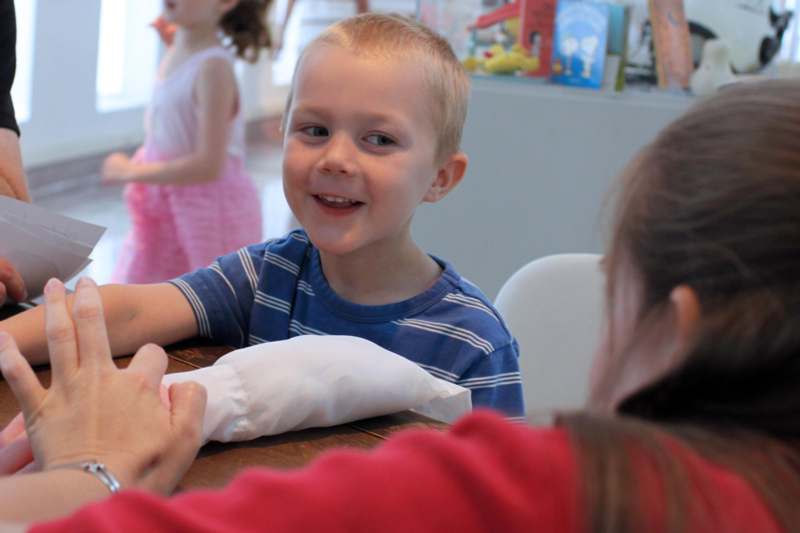
Assistant Professor of Psychology Karen Gunther, who also teaches neuroscience courses at the College, demonstrated to young participants how the brain can be fooled into believing we are being touched when we're actually only visualizing the experience.
Asked what she hoped visitors would take away from the experience, Professor Gunther said, "I hope they realize that brains are cool, not icky!
"And we hope people took away maybe a few tidbits of information—such as how you can tell from looking at the direction from which the spinal cord leaves the brain if it’s from a 2- or 4-footed creature, or why the rubber hand illusion works, or that you can adapt your brain to altered input such as from the prism goggles.
"And if they did take away a couple of fun facts, hopefully in the future they’ll be more interested in finding out more about the brain."
In the photo above Whit Horton seems to know Professor Gunther is trying to trick his brain!
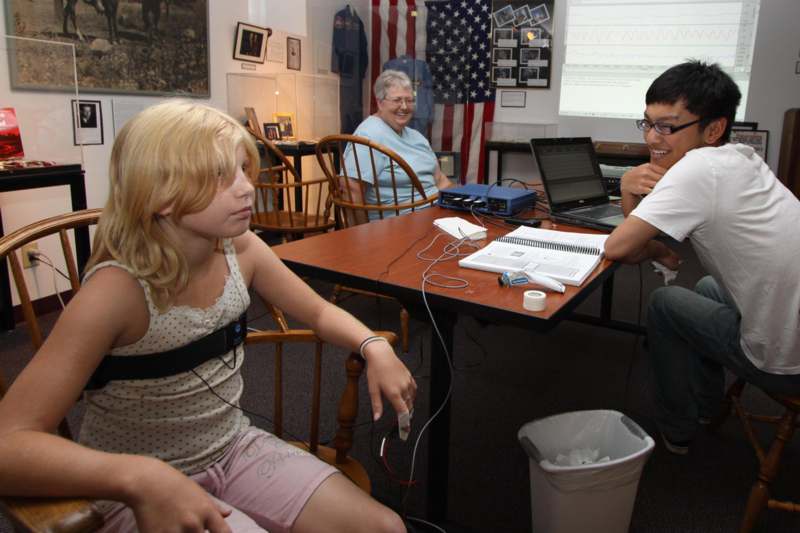
Shoshanna Conkright takes a lie detector test from Wabash psychology depaartment intern Xumin Sun ’13. She finally made the readings on the screen spike when she answered "yes" to the question: Have you ever ridden a dinosaur?
Carnegie Museum Director Kat Burkhart said partnerships with Wabash such as Brain Day and the very popular Pi Day—the March 13th event that brings Wabash physics and math professors and students to the museum for "five tables of demonstrations, hair-raising fun, lasers, and more"—are very popular with visitors.
"Our core visitors come for both days, because they know they will be really cool and special events," Burkhart said. She hopes to work with other departments at the College to present similar events, noting the work of Wabash interns in getting the events off the ground: "Jacob Castilow, who just graduated, was our intern who helped get these started and Nolan Eller ’11, our current intern, has been a great help."

